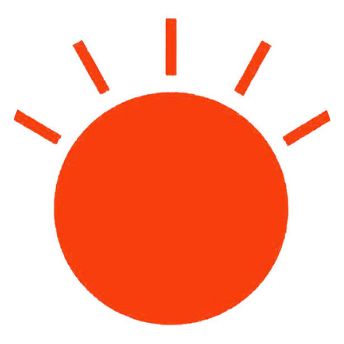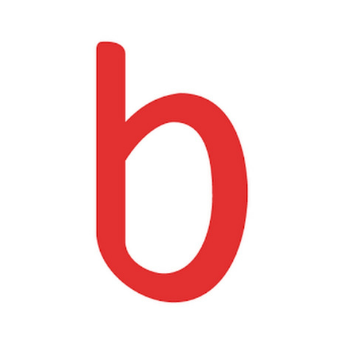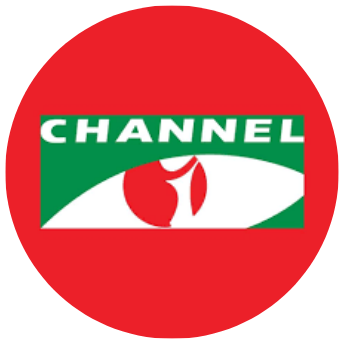Every small business owner dreams of explosive growth, but for two years, our dream was just that—a dream. We were passionate about our craft at "Artisan Leather Goods," but passion doesn't pay the bills. Our sales were flat, our marketing efforts felt like shouting into a void, and honestly, we were close to giving up.
This isn't another vague list of marketing tips. This is the real, transparent story of how our small business went from merely surviving to thriving. This is the detailed case study of the exact small business growth strategies we implemented to increase our small business sales by a staggering 150% in just six months, and how you can apply these same lessons to your own business starting today.
Chapter 1: The Breaking Point - Our Story of Stagnation
Who We Are: Introducing 'Artisan Leather Goods'
Before the growth, we were a small two-person team making hand-stitched leather wallets, bags, and journals. We knew our products were exceptional, but we were just one of many online stores. Our target customers were discerning individuals who valued quality and craftsmanship, but we were failing to reach them.
The Problem: The Hard Numbers
A business can't run on feelings; it runs on data. And our data was bleak. Here’s a snapshot of where we were six months before our transformation:
-
Average Monthly Online Sales: $1,500
-
Average Website Visitors: < 50 per day
-
Conversion Rate: 0.5%
-
Social Media Following: A few hundred friends and family
-
Brand Recognition: Virtually none
We were spending a small budget on generic social media ads, but it was clear we didn't know how to get more customers effectively. We were facing the classic small business dilemma: a great product with no clear path to the right market.
The Goal: A Shift in Mindset
We knew we needed to do more than just "try harder." We needed a complete strategic overhaul. Our goal was ambitious but clear: Increase online sales by 150% in 6 months by building a sustainable, data-driven marketing and sales system. It was time to stop guessing and start strategizing.
Chapter 2: The Foundation - Fixing the Leaks Before Building the Skyscraper
You can't pour water into a leaky bucket. Before spending a dollar on new marketing, we had to fix our core foundation. This was the most critical, yet often overlooked, part of our journey to increase small business sales.
Section 2.1: A Deep Dive into Our Audience (Persona Development)
Our first mistake was trying to sell to "everyone." We paused and did a deep dive to understand exactly who our ideal customer was. We developed two detailed personas:
-
The University Student, Alex (21): Studies design, values aesthetics and durability, has a limited budget but is willing to invest in one good piece. Spends time on Instagram and TikTok. Pain point: Needs a stylish, long-lasting bag for class that isn't a generic backpack.
-
The Young Professional, Sarah (29): Works in a creative agency, values minimalism, ethical sourcing, and quiet luxury. Spends time on Instagram and Pinterest. Pain point: Wants a high-quality leather tote for work that is professional but unique.
This exercise changed everything. We now knew who we were talking to, which platforms to use, and what messages would resonate.
Section 2.2: Redefining Our Unique Selling Proposition (USP)
"We sell quality leather goods" is not a USP; it's a description. We needed to be specific. After analyzing our personas and our passion, we landed on a powerful USP:
"Ethically Sourced, Hand-stitched Leather Goods for the Modern Minimalist. Backed by a Lifetime Warranty."
This USP immediately communicated our core values (ethical, handmade) and addressed a key customer concern (durability) with the warranty. It became the guiding principle for all our marketing.
Section 2.3: The Website Overhaul (Conversion Rate Optimization - CRO)
Our website was the leaky bucket. It was slow, confusing on mobile, and didn't inspire trust. To improve our conversion rate, we made several crucial changes:
-
High-Quality Photography: We replaced our amateur phone pictures with professional photos showing the products in use (lifestyle shots) and highlighting the fine stitching (detail shots).
-
Simplified Navigation: We made our menu crystal clear: Shop Men, Shop Women, Our Story, Contact.
-
Mobile-First Design: Over 60% of our traffic was from mobile. We ensured the site was flawless and fast on all devices.
-
Crystal-Clear Product Descriptions: We didn’t just list features; we told a story. Instead of "Brown Leather Wallet," it became "The Minimalist Wallet: Handcrafted from Full-Grain Leather, Designed for a Lifetime."
-
Added Social Proof: We immediately added a section for customer reviews and testimonials.
-
Streamlined Checkout: We reduced the checkout process from five steps to three and added trusted payment logos like Visa and PayPal to build confidence.
[Image: A before-and-after comparison of the Artisan Leather Goods homepage, showing the old cluttered design versus the new clean, professional look.]
Chapter 3: The Engine of Growth - Our Multi-Channel Marketing Strategy
With a solid foundation in place, it was time to drive traffic. We focused our energy on three key channels that aligned with our customer personas. This is one of the most vital marketing tips for small business owners: don't try to be everywhere. Be where your customers are.
Section 3.1: Content is King: The SEO & Blogging Strategy
We knew that to get long-term, free traffic, we needed to rank on Google. This meant creating helpful content.
-
Keyword Research: We used free tools like Google Keyword Planner to find what our ideal customers were searching for. We targeted long-tail keywords—specific, less competitive phrases that showed purchase intent. Examples:
-
"how to clean a leather wallet"
-
"best minimalist work bag for women"
-
"signs of a genuine leather product"
-
-
Creating Valuable Blog Content: We started a blog and wrote articles answering these exact questions. Each post was over 1,500 words, filled with helpful advice, and featured our products naturally within the content. For example, in the "how to clean a leather wallet" article, we recommended our own leather conditioner. This is a core small business growth strategy that builds trust before asking for the sale.
-
On-Page SEO: We optimized every blog post with our target keyword in the title, meta description, URL, and image alt-text. We also internally linked between our articles to keep readers on our site longer.
Section 3.2: The Power of Social Proof: Mastering Facebook & Instagram
Our personas, Alex and Sarah, lived on Instagram and Facebook. Here’s how we captured their attention:
-
Aesthetic Cohesion: Our Instagram feed was redesigned to reflect our USP: clean, minimalist, and professional. We used a consistent color palette and filter for all our photos.
-
Content Beyond Products: We stopped just posting "For Sale" photos. Our content mix became:
-
30% Product Shots: Beautiful, high-quality images of our goods.
-
40% Behind-the-Scenes: Videos of the hand-stitching process, showing the care and craftsmanship involved. This built immense trust.
-
30% User-Generated Content (UGC): We encouraged customers to share photos with our products using a specific hashtag. We reposted the best ones, which is the most powerful form of social proof.
-
-
Targeted Facebook & Instagram Ads: With our detailed personas, our ad targeting became laser-focused. We ran retargeting campaigns showing ads to people who had visited our website but hadn't purchased. We also created "Lookalike Audiences" based on our existing customer list to find new people likely to be interested in our products. Our ad spend finally started delivering a positive return.
[Image: A screenshot of the Artisan Leather Goods Instagram feed, showcasing a cohesive, minimalist aesthetic with a mix of product shots and behind-the-scenes content.]
Section 3.3: Building a Community with Email Marketing
Email is the most direct way to get more customers to return.
-
Building the List: We added a simple pop-up on our website offering "10% off your first order" in exchange for an email address. This simple offer grew our email list by 300% in two months.
-
The Automated Welcome Series: As soon as someone signed up, they received a series of three automated emails:
-
Email 1 (Immediate): Welcome message, brand story, and their 10% discount code.
-
Email 2 (2 Days Later): Showcased our bestselling products and customer reviews.
-
Email 3 (4 Days Later): A personal note from the founders explaining our craft and lifetime warranty.
-
-
Weekly Campaigns: Every week, we sent out a newsletter that was 80% value (e.g., a link to our new blog post on styling a leather bag) and 20% promotion. This kept our audience engaged and prevented them from unsubscribing.
Chapter 4: The Sales Funnel - Turning Visitors into Loyal Customers
All these marketing efforts worked together to create a predictable sales funnel.
-
Awareness (Top of Funnel): People discovered us through our SEO-optimized blog posts, Instagram reels, and targeted Facebook ads.
-
Consideration (Middle of Funnel): They learned to trust us through our detailed website, customer reviews, and value-driven email newsletter.
-
Conversion (Bottom of Funnel): The final push to buy came from a clear call-to-action, a simple checkout process, and a strategically timed discount code from our welcome email series. This is how we began to improve our conversion rate consistently.
-
Loyalty & Advocacy (Post-Funnel): After a purchase, our job wasn't done. Customers received a personal thank-you email, and after two weeks, an email asking for a review. This created a cycle of repeat business and user-generated content for our social media.
Chapter 5: The Results - Analyzing the 150% Growth
After six months of consistent execution, the results were transformative.
Section 5.1: The Numbers Don't Lie (Before vs. After)
Section 5.2: Which Strategy Had the Biggest Impact?
While every channel was important, the data showed a clear winner for sustainable growth: SEO and Content Marketing.
-
Paid Ads (Facebook/Instagram): Provided the quickest initial boost and were great for retargeting. Accounted for ~35% of the sales increase.
-
Email Marketing: Had the highest conversion rate. Was responsible for ~25% of the sales increase, mostly from repeat customers.
-
SEO/Blogging: Was the slowest to start but became our biggest and most profitable channel by month six. It now drives over 40% of our traffic for free and accounted for ~40% of the sales increase. This is the ultimate long-term small business growth strategy.
Section 5.3: Unexpected Lessons We Learned
-
Consistency is More Important Than Intensity: It wasn't one big campaign that worked. It was posting to our blog once a week, sending our newsletter every Tuesday, and engaging on social media every single day.
-
Don't Be Afraid to Niche Down: By focusing only on "modern minimalists," we were able to attract the perfect customers instead of trying to appeal to everyone.
-
Your Story is Your Best Marketing Tool: People connected with our behind-the-scenes content far more than our perfect product shots.
Chapter 6: Your Blueprint for Growth - How You Can Replicate Our Success
You don't need a massive budget to achieve this. You need a clear plan. Here are the actionable steps you can take to increase your small business sales.
Section 6.1: A Step-by-Step Action Plan
-
Week 1: Define Your Customer. Create 1-2 detailed customer personas. Be specific.
-
Week 2: Refine Your USP & Website. What makes you unique? Make sure your website clearly communicates this and is easy to use.
-
Month 1: Start Your Blog. Do keyword research and write your first two high-value blog posts.
-
Month 1-2: Master One Social Media Channel. Choose the platform where your customers are. Create a content calendar and be consistent.
-
Month 2 onwards: Build Your Email List. Install a pop-up on your website offering a valuable incentive. Set up an automated welcome series.
-
Month 3 onwards: Analyze and Optimize. Use Google Analytics to see what's working. Double down on the strategies that drive the most traffic and sales.
Section 6.2: Tools and Resources We Recommend
-
For SEO: Google Keyword Planner (Free), Ubersuggest (Free & Paid)
-
For Social Media: Canva (for graphics), Meta Business Suite (for scheduling)
-
For Email Marketing: Mailchimp (Free plan available), ConvertKit
-
For Analytics: Google Analytics (Essential and Free)
Conclusion: Your Growth Journey Starts Today
Increasing our small business sales by 150% wasn't about a secret hack or a magic bullet. It was about shifting from a reactive "hope and pray" approach to a proactive, customer-centric strategy. We built a solid foundation, understood our audience deeply, and consistently delivered value across multiple channels.
The journey wasn't easy, but it was systematic. The growth you desire for your business is not out of reach. It's waiting for you on the other side of a well-executed plan.
Which of these strategies will you implement first? Share your plan in the comments below!

































